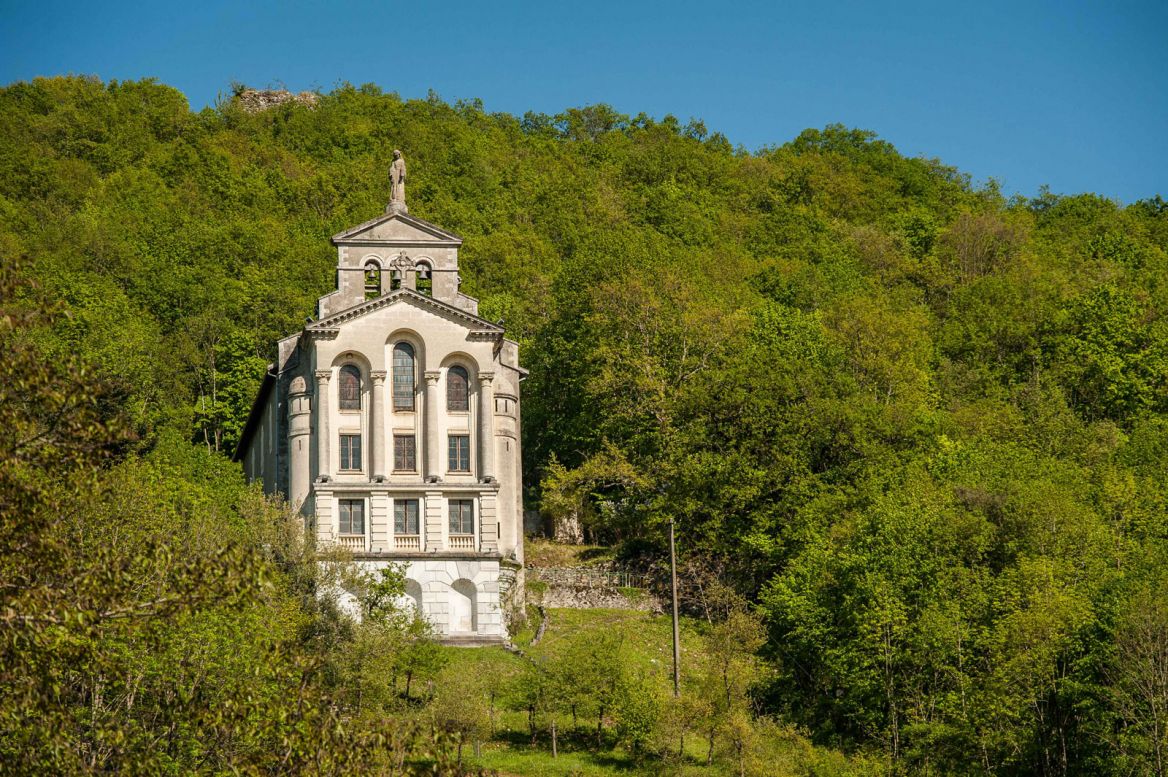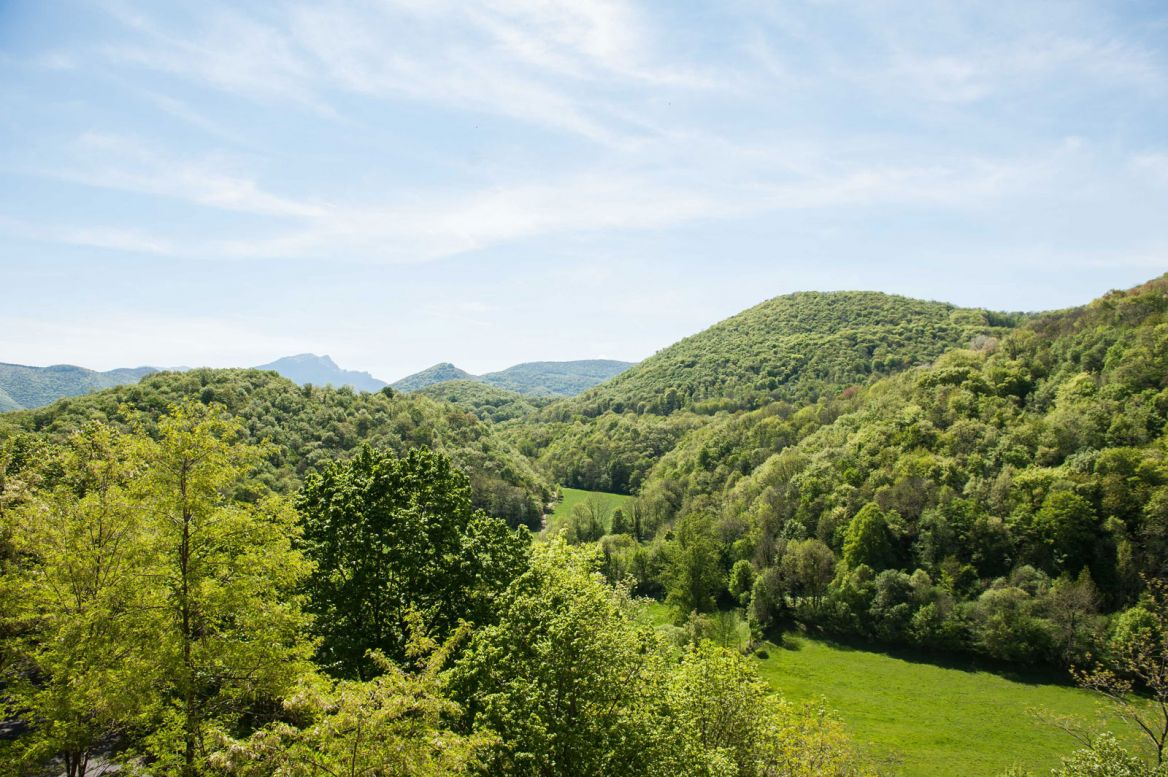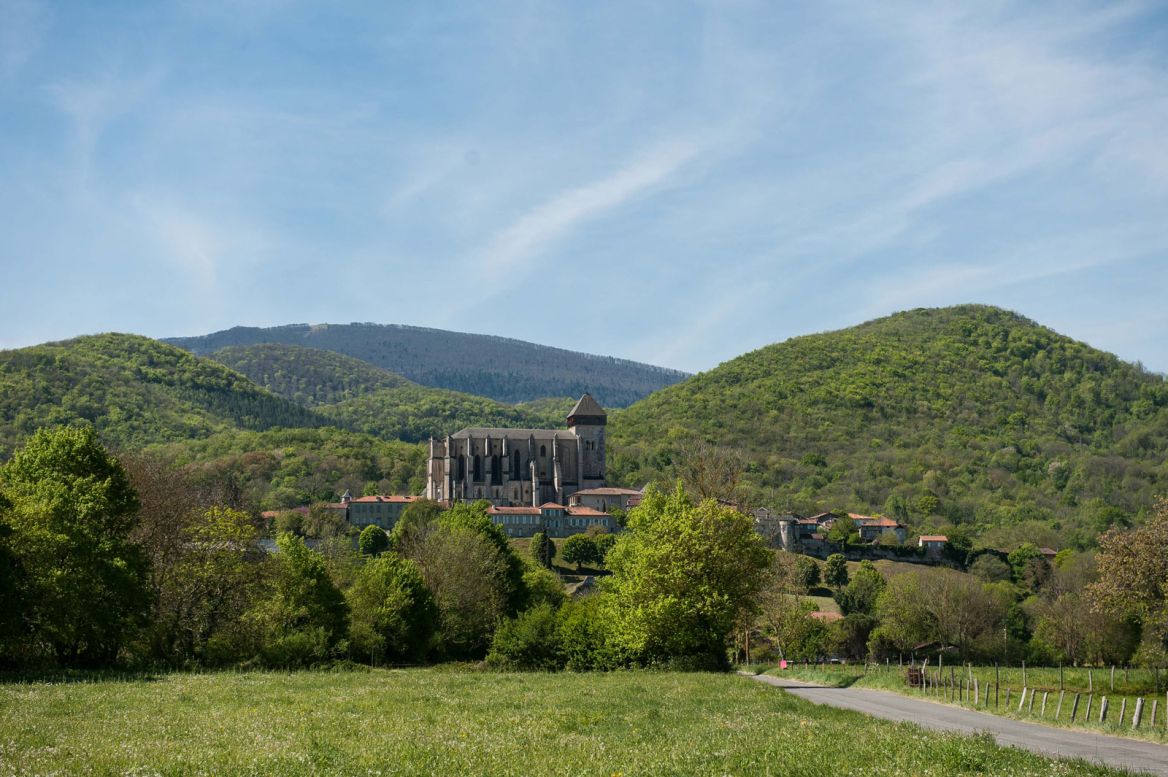- Home page
- Tourism
- Discover
- Visit Toulouse region and the French Pyrénées
- Haute Garonne - Le Comminges
- Visit Toulouse region and the French Pyrénées
- Discover
- Tourism
Le Comminges
LE COMMINGES, BALCONY OF THE PYRÉNÉES MOUNTAINS
The south of Toulouse and the Haute-Garonne form a region of grazing land, hills, and a green and wooden area with the Pyrénées Mountains as backdrop. A number of small picturesque villages are worth the visit.
For example Aurignac, a village perched in the mountains that has a specific charm with its streets lined with medieval and Renaissance houses and a castle with a dungeon. The village gave its name to a paleolithic period: The Aurignacian period. It was in this village that, in 1860, Edouard Lartet (French geologist and paleontologist 1801 – 1871) discovered a shelter with traces of human occupation. ‘The Aurignacien” is a museum dedicated to Homo-Sapiens.
In the surrounding areas, other places are worth visiting: the arboretum de Cardeilhac, created in 1914, covering 13 hectares (32 acres) and hundred of different aromas; the Gallo-roman villaof Montmaurin, one of the biggest villas of Gaule, which at one time totalled 200 rooms and was surrounded by buildings on approximately 20 hectares (50 acres). Excavated between 1946 and 1960, its ruins have been exposed. Only few miles away from here, the small village of Valentine houses the Gallo-Roman villa of Nymphus, named after its owner, which today is an archaeological site.
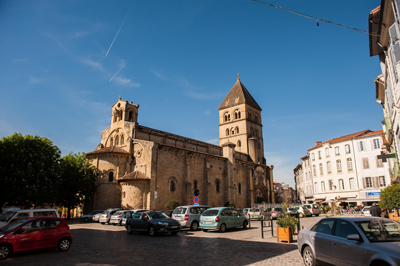 Another point of interest is in Saint Gaudens, the capital of Comminges. The Church of Saint-Pierre and Saint-Gaudens was dedicated to a young martyr beheaded in 475 due to his faith. The building is from the medieval period; however it has been transformed during the 19th century with the addition of a Roman style square tower bell, inside cloister you can admire magnificent capitals from the 12th century and a gothic style gate.
Another point of interest is in Saint Gaudens, the capital of Comminges. The Church of Saint-Pierre and Saint-Gaudens was dedicated to a young martyr beheaded in 475 due to his faith. The building is from the medieval period; however it has been transformed during the 19th century with the addition of a Roman style square tower bell, inside cloister you can admire magnificent capitals from the 12th century and a gothic style gate.
Saint-Bertrand de Comminges, perched at the top of a promontory, is a picturesque medieval town with many half-timbered houses in its historic quarters. It is an important town of art and history.
We enter in the town by the Majou Gate or the Cabriole Gate. The Sainte-Marie Cathedral, built on a rocky ridge, can be seen from afar, and is a stop on the pilgrimage road of Santiago de Compostela. Built during the 12th century, the imposing 33 metres bell tower has survived, with its painted tympan gate representing the décor of « the adoration of mages » and one gallery of the Cloister. The organ is a rare example of its kind.
At the bottom of the hill, on the road to Valcabrère, you can discover the antique town: Lugdunum-Convenae, created during the 1st century BC. Rolling out on 30 hectares (accounting from 5,000 to 10,000 inhabitants and housed a temple, thermal spas, an antic theatre. Today only the ruins remain. All the artefacts found during the excavations have ben gathered in the archaeological exhibition “Olivétains II”. The Basilique Saint Just, in the middle of the countryside is a pure jewel of the Roman art.
The Gargas caves situated in Aventignan in the Neste Valley are the only painted caves in the department of the Hautes-Pyrénées. 200 paintings of negative hands from 26,000 years ago made by projection of black or red pigments, but also animal engravings and some paintings. The upper cave is painted of concretions. The Interpretation Centre gives some assistance to understand the history of the site.
Another Neo-Renaissance style treasure is hidden to the north of Saint Bertrand de Comminges: The Valmirande Castle, built in 1892, with its landscaoe gardens and listed “Jardin Remarquable” (The label “Jardin remarquable” was creates in 2004”, it recognized and value the parks and gardens open to the public and well maintained).
Bagnères de Luchon with its belle époque architecture and beautiful villas is based at 630 metres altitude and is the fifth thermal resort in France, and the first in the Pyrénées. During the 19th century, it was a great place to come on holidays: Flaubert, Lamartine, Dumas, Daudet, Napoléon III and even Mata Hari came to Bagnères de Luchon.
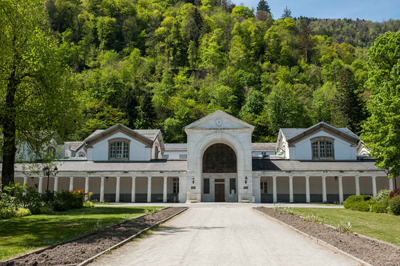 Situated in the splendid natural amphitheatre, Bagnères de Luchon flirts with the highest peaks, those called the « 3,000 ».
Situated in the splendid natural amphitheatre, Bagnères de Luchon flirts with the highest peaks, those called the « 3,000 ».
The museum of pays de Luchon gives an insight on the art and history of the region traditions. On a different theme, the aeronautic museum, presents the history of the aviation in the Pyrénées.
The Luchon valleys (Pique Valley, Lys Valley, Oueil Valley, Larboust Valley) or the valleys on the Aspet coast (Aspet Valley, Arbas Valley, Job Valley and Gar Vallaey) are dedicated to the preservation of the environment, the fauna and the flora, for the outside sports activities, from hiking trails and mountain biking to paragligiing and potholing.
Résidence Vacancéole L’Illixon***
Résidence Vacancéole L’Illixon***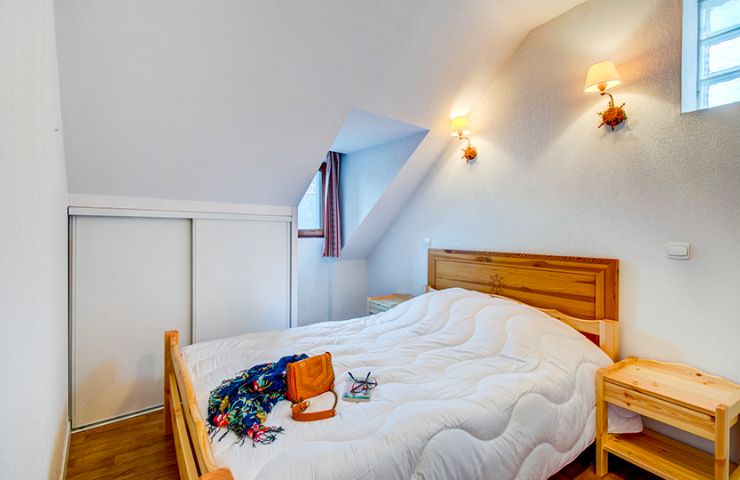
In the far south of Haute-Garonne, in the heart of the Pyrenees, the Illixon*** tourist residence welcomes you to ...
120 m - Bagnères-de-Luchon
Résidence Vacancéole L’Illixon***
Résidence Vacancéole L’Illixon***
In the extreme south of Haute-Garonne, in the heart of the Pyrenees, the Illixon*** tourist residence welcomes you ...
122 m - Bagnères-de-Luchon
Le Patio de Luchon
Le Patio de Luchon
Welcome In the heart of the Pyrenees, Le Patio de Luchon welcomes you in an old hotel completely renovated into ...
193 m - Bagnères-de-Luchon
